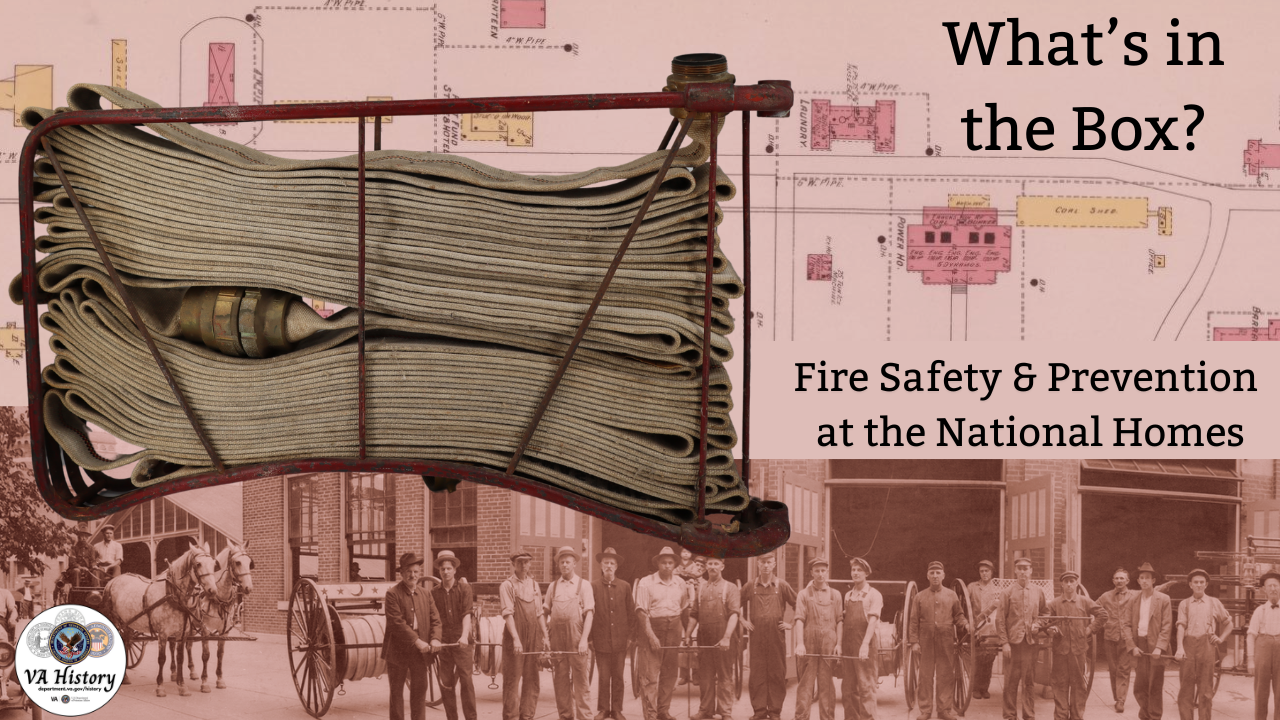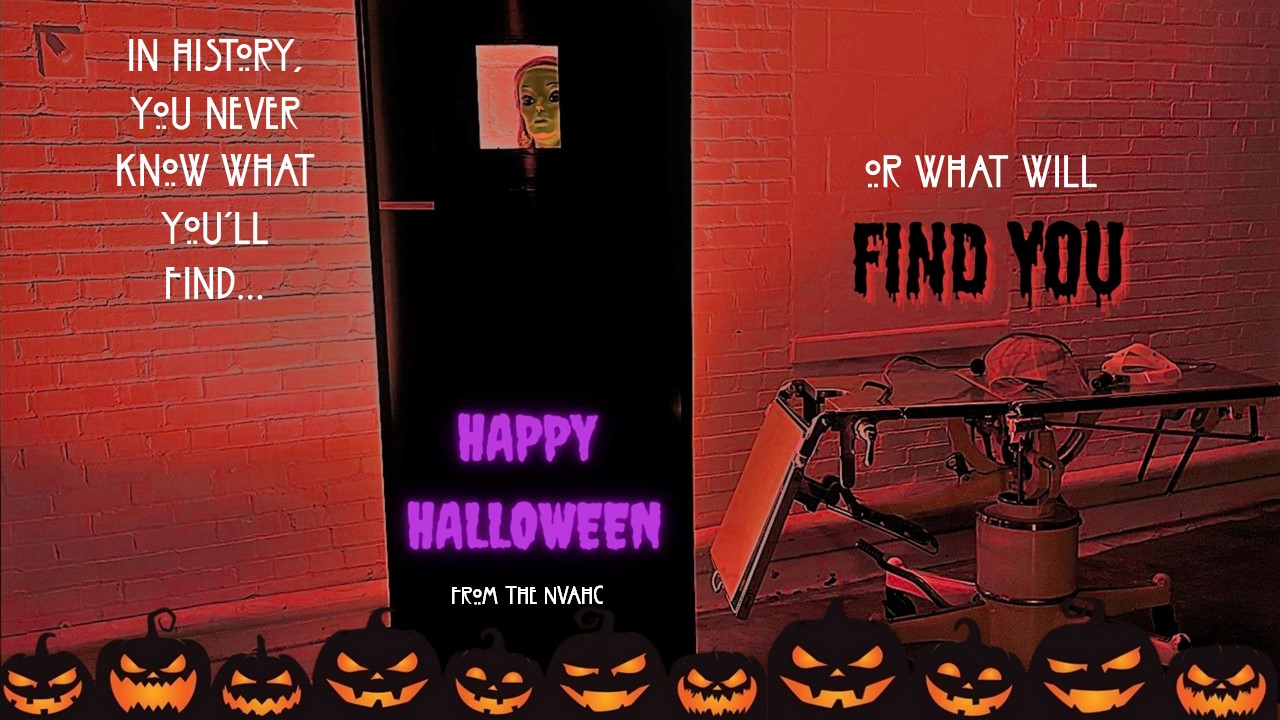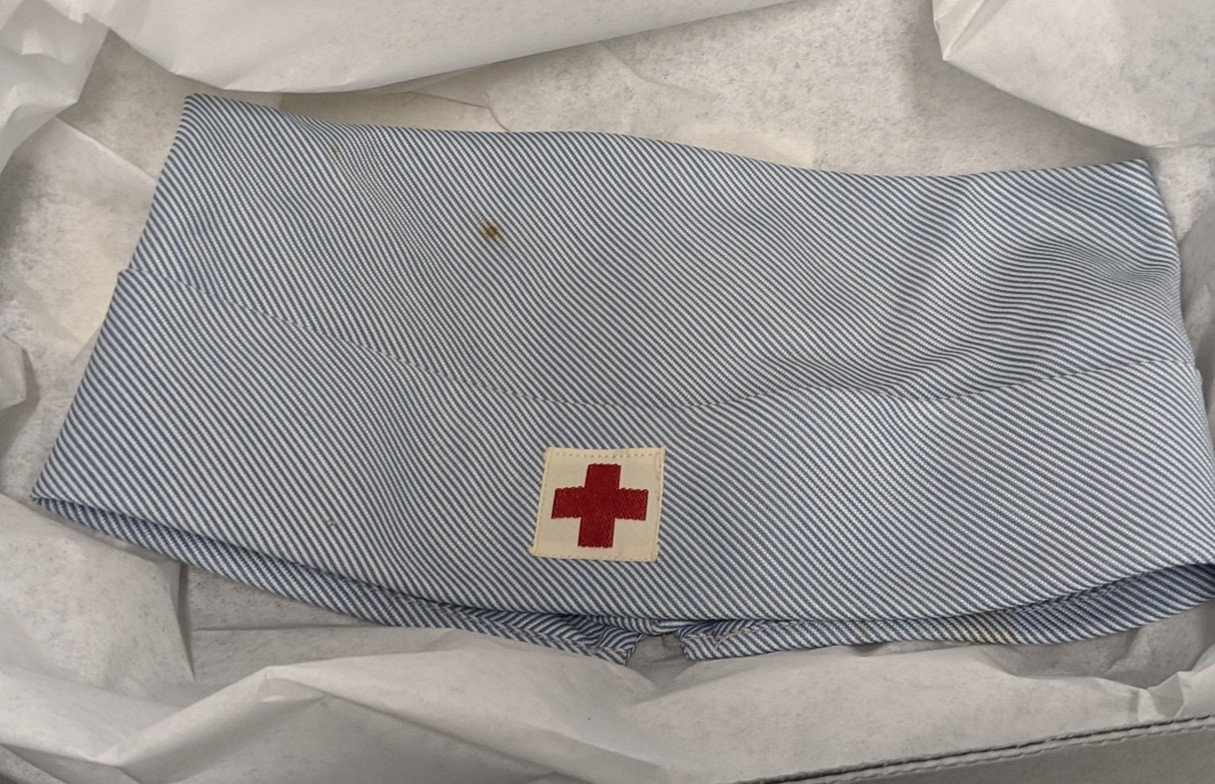If you were a movie goer in the 1990s, the image and the phrase “what’s in the box?” from the movie Se7en evokes specific memories, but moviegoers knew the contents. But we sympathized with Brad Pitt as his character realized that the answer was a grisly discovery (watch the clip to see for yourself). While we never actually see what is in the box, it is a powerful moment as the movie reaches its finale. The National VA History Center team recently had a similar experience when opening a box in our growing collection.
If you read our previous Halloween themed Curator Corner Happy Halloween and creepy dolls – VA History, you know that we have several creepy dolls in our inventory. When opening the last box of what we thought were rehabilitation dolls, we discovered a mannequin head and had our own what’s-in-the-box moment. Initially, we weren’t sure why it was included in the objects we received from Mountain Home VA Medical Center. Since it was not part of the rehab dolls collection, we put it back in the box and did not give it much thought.

Recently, we started going back through our items, and we realized the head was a good Halloween image. We were looking for something with an “American Horror Story” feel. When we took it out of the box to photograph, we discovered the reason for the mannequin head. Tucked into the wrapping paper was a cap worn by a Red Cross volunteer at the Mountain Home VA. Fortunately, the cap included a handwritten note with some background on the object:
“Red Cross Volunteer Worker Cap from About 1949-50, Worn by Thelma Glisson who is currently a vol. for SWS in the RCH Program (& has been for years!) -KH 9-14-90”
Note transcription
This style of cap was worn after World War II and was important because it easily distinguished a Red Cross volunteer nurse from other staff. While the uniforms changed over time, the Red Cross has remained the key symbol for volunteers. You can learn more about the history of the Red Cross nursing program at their website.
Hopefully, these spooky images will not haunt your nightmares.
Have a great Halloween from the VA History Office.
By Kurt Senn
Curator, National VA History Center
Share this story
Related Stories

Curator Corner
The Story Behind the National Homes’ Seal
The National Home for Disabled Volunteer Soldiers turns 160 years old in 2025. The campuses are the oldest in the VA system, providing healthcare to Veterans to this day.
At the time of their establishment, they were the first of their type on this scale in the world. Within the NHDVS seal is the story that goes back 160 years ago.

Curator Corner
What’s in the Box? Fire Safety and Prevention at the National Homes
Fire safety may not be the first thing that comes to mind when thinking about Veteran care, but during the National Home for Disabled Volunteer Soldiers period (1865-1930), it was a critical concern. With campuses largely constructed of wooden-frame buildings, housing thousands of often elderly and disabled Veterans, the risk of fire was ever-present. Leaders of the National Homes were keenly aware of this danger, as reflected in their efforts to establish early fire safety protocols.
Throughout the late 19th century, the National Homes developed fire departments that were often staffed by Veteran residents, and the Central Branch in Dayton even had a steam fire engine. Maps from this era, produced by the Sanborn Map Company for fire insurance purposes, reveal detailed records of fire prevention equipment and strategies used at the Homes. These records provide us with a rare glimpse into evolving fire safety measures in the late 19th and early 20th Century, all part of a collective effort to ensure the well-being of the many Veterans living there.





